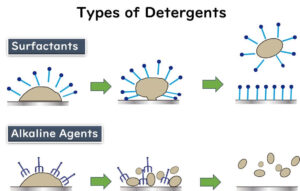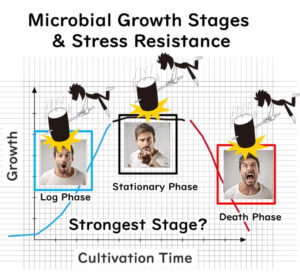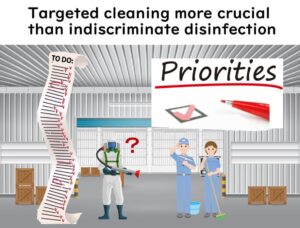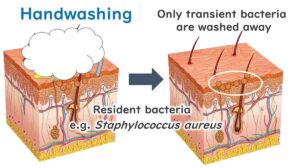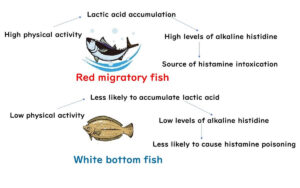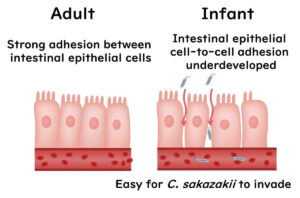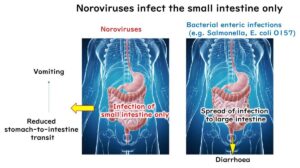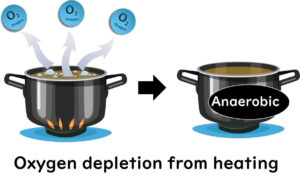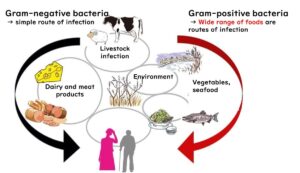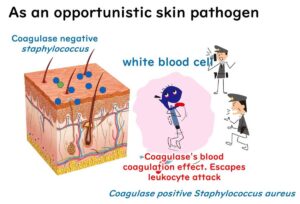Basic Course
Discover the Powerful World of Cleaning Agents in the Food Industry: Where grime and germs meet their match
Enter the battleground of the food factory, where grime and germs are the persistent villains, and our mighty cleaning and disinfecting agents stand ready to battle and ensure pristine conditions.
Biofilm in food factories
When considering the cleaning and sterilization of microbes in factories, it's crucial to understand the concept of biofilms. This article simply and clearly explains what biofilms are, their formation process and mechanism, the physiological characteristics of biofilm cells, the areas in food factories where they are likely to form, and methods of removal.
Disinfection vs. Cleaning in Food Safety: Why Thorough Cleaning is the Foundation
To understand the essential strategies of disinfection and cleaning in a food production facility, consider a hypothetical scenario involving Mr. Yamada, a factory worker. Imagine him attempting to disinfect his boots by immersing them in a disinfectant tray at the factory entrance, despite significant food residue on the soles. This situation highlights a critical insight into microbial disinfection: mere disinfection without proper cleaning is ineffective.
Handwashing Nuances: Efficacy Against Transient Bacteria vs. Resident Flora
The way we wash our hands daily can remove dirt and transient bacteria. However, it's not possible to remove the resident bacteria that naturally live on our hands. For instance, Staphylococcus aureus, commonly known as staph, cannot be washed away. In fact, washing hands may even bring staph to the surface, increasing the risk of transferring it to food. This article will discuss the purpose, meaning, and microbiological aspects of handwashing.
Histamine forming bacteria
In this article, we will explore the types of food that commonly lead to histamine food poisoning, the causes, symptoms of histamine food poisoning, prevention methods, the bacteria that produce histamine, why the histidine decarboxylation reaction occurs in bacteria, the fact that heating food does not eliminate histamine once it's formed, and the misconception that fish is the only cause of this issue.
Understanding Cronobacter sakazakii: Risks, Prevention, and Safe Formula Preparation for Infants
In this article, let's unravel the mystery of Cronobacter sakazakii, a bacterium that's causing concern due to its sneaky way of contaminating infant formula. We'll tackle why this particular germ is worrisome for babies and also discuss the dos and don'ts when preparing baby formula, all from the viewpoint of keeping those tiny tots safe.
Norovirus Explained: Characteristics, Transmission, and Prevention
In this article, we dive deep into noroviruses, uncovering their resilience and the ways they can inadvertently affect food safety. From transmission through food sources to the surprising survival strategies of these viruses, we provide practical insights to prevent norovirus food poisoning.
Clostridium perfringens: Uncovering the Risks of the 'Cafeteria Germ' in Large-Scale Food Poisoning Outbreaks
Clostridium perfringens, known as the "cafeteria germ," is a notorious bacterium responsible for causing food poisoning in large-scale outbreaks. Often lurking in foods like stews and curries that are left to cool slowly, this resilient microbe thrives in warm, oxygen-free environments, making it a significant concern for bulk food preparation in cafeterias, catering facilities, and restaurants. In this article, we delve into the unique characteristics of C. perfringens, its role in foodborne illness, and essential practices to prevent contamination, ensuring safer food handling in high-volume settings.
Understanding Listeria monocytogenes: Risks, Regulations, and Safety Measures in Ready-to-Eat Foods
In this article, we're diving into the world of Listeria monocytogenes, a resilient bacterium responsible for severe foodborne illness, particularly affecting pregnant women, the elderly, and those with weakened immune systems. We'll explore the unique survival abilities of this Gram-positive bacterium, its high fatality rate in foodborne outbreaks, and why it's a primary concern in ready-to-eat foods like deli meats, cheeses, and smoked seafood. Discover the challenges of controlling L. monocytogenes in food production and the differences in regulatory standards between the U.S., EU, and Japan, as we shed light on best practices for keeping food safe from this persistent pathogen.
Exploring Staphylococcus aureus: From Skin Infections to Foodborne Illnesses – A Comprehensive Guide
Welcome to the fascinating realm of Staphylococcus aureus, a bacterium that plays a double role in our lives – both as a harmless skin resident and a potential cause of serious foodborne illness. In this article, we unravel the complex nature of S. aureus, from its habitats on mammalian skin to its infamous enterotoxin, which poses a significant food safety risk. Discover how this opportunistic pathogen operates, its heat-resistant toxins, and the preventive steps food handlers can take to ensure safety. Whether you're studying microbiology or managing food safety, this post sheds light on the critical aspects of Staphylococcus aureus and its impact on health.
